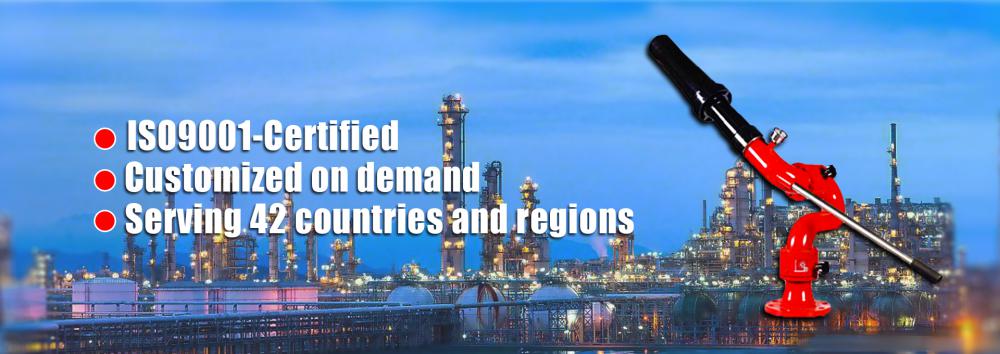How to Choose the Right Fire Monitor
Fire monitors can be categorized into five main types: Manual Fire Monitors, Large-Space Fire Monitors, Electric-Control Fire Monitors, Explosion-Proof Fire Monitors, and Water/Foam Dual-Purpose Monitors. Each type is designed for specific scenarios. Below is a detailed breakdown:

Manual Fire Monitors
Applications: Widely used on fire trucks, fireboats, industrial plants, oil fields, and warehouses.
Installation: Mounted outdoors in a seated position, distinguishing them from other types.
Models: PS20, PS25, PS30, PS40, PS50.
Large-Space Fire Monitors
Applications: Ideal for stadiums, exhibition halls, theaters, shopping malls, and transportation hubs—high-traffic areas with rapid fire spread risks.
Installation: Inverted ceiling mounting with 24/7 infrared/UV flame detection for automatic fire suppression.
Electric-Control Fire Monitors (Remote-Operated)
Applications: Fixed systems for factories, warehouses, museums, oil tanks, and storage facilities.
Key Feature: Wired/wireless remote control for precision operation.
Models: PSKD20, PSKD25, PSKD30, PSKD40, PSKD50, PSKD60.
Explosion-Proof Fire Monitors
Applications: Oil refineries, chemical plants, LNG/LPG facilities, hazardous material docks, power plants, and hangars—explosive environments.
Safety Design: Complies with ATEX/IECEx standards for explosion and dust resistance.
Water/Foam Dual-Purpose Monitors
Applications: Fire trucks, marine firefighting, industrial sites, and oil storage areas.
Flexibility: Switch between water or foam modes based on fire class (A/B).
Models: PL24, PL32, PL40, PL48.

- Electric Fire Cannons for Coal Sheds Dual Function Firefighting and Dust Removal
- The Optimal Length of the Suction Pipe for Self-Priming Foam Fire Cannons
- What are the requirements for the layout of automatic fire monitor
- Fixed Fire Monitor Installation Guidelines
- 150-Meter Remote Controlled Fire Cannon at Sinopec Port
- [Standard Design] What size fire pipes do different flow rate smart fire water monitors need?



